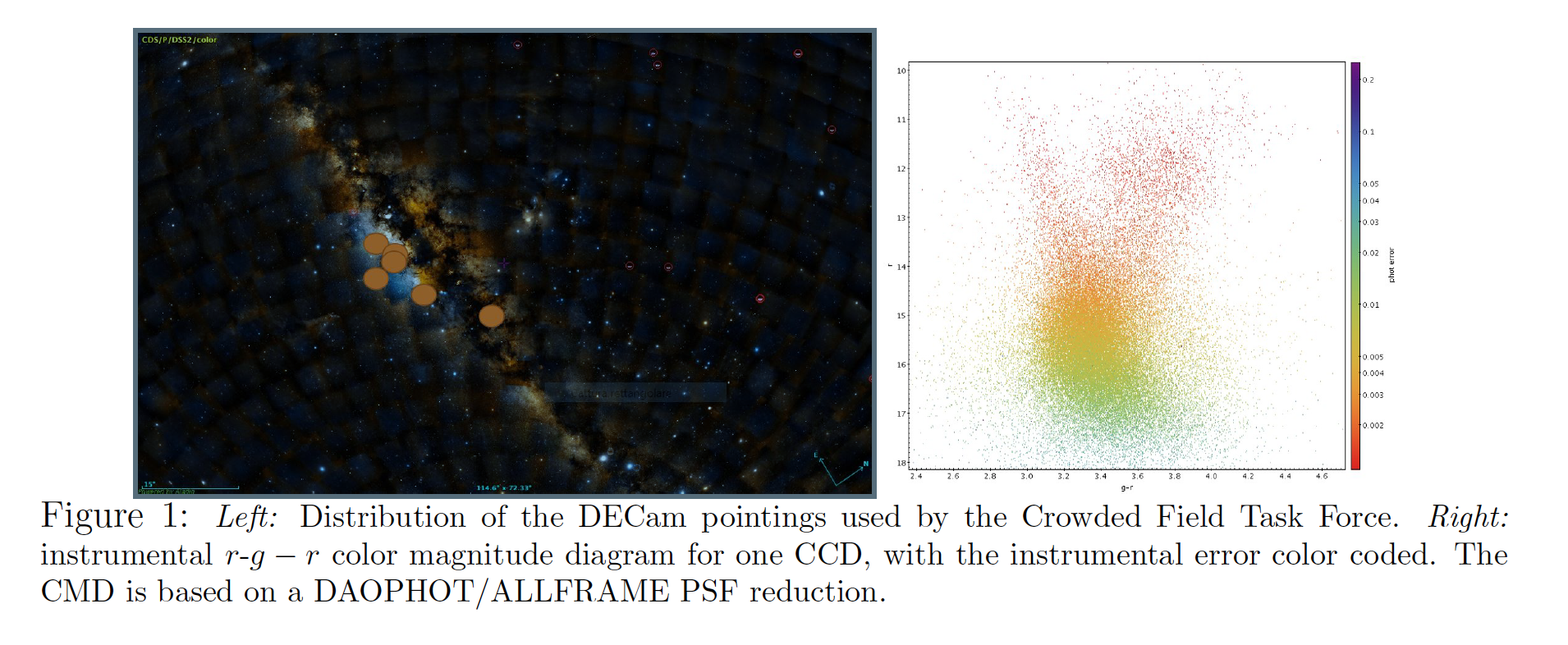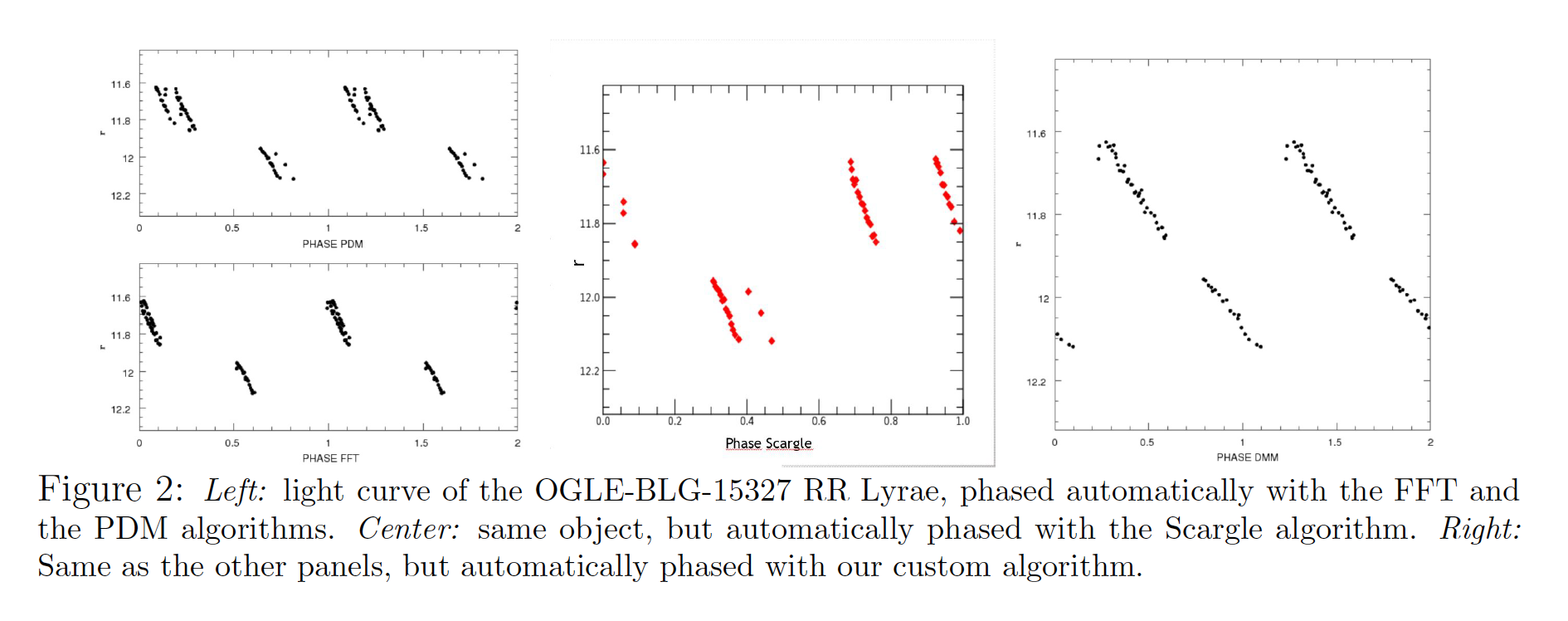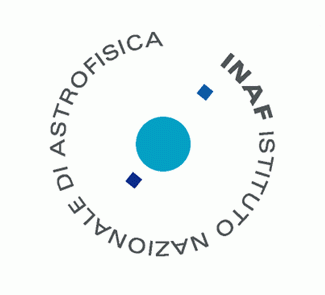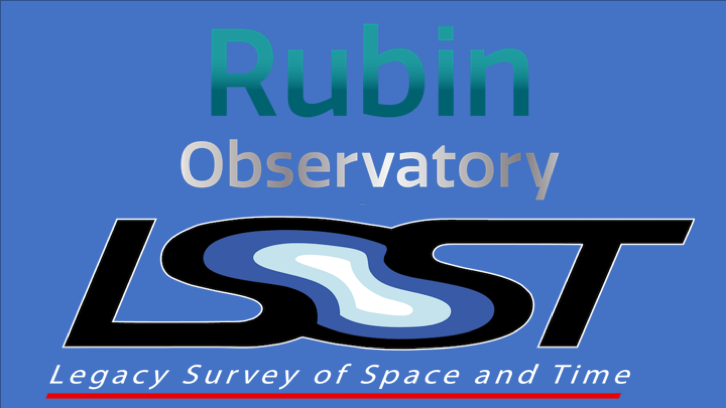Scientific Objectives
The main aim of this experiment is to take advantage of the deep and accurate multiband optical photometry that is going to be collected by LSST to constrain the 3D shape of the Galactic Spheroid. To fully exploit the capabilities of LSST we plan to use radial variables as stellar tracers of the old (RR Lyrae, Type II Cepheids), intermediate-age (Miras) and young (classical Cepheids) stellar populations. These objects will be used as beacons to drill the Galactic structure and, in particular, to investigate the early formation (Halo, Bulge, globular clusters, dwarf galaxies) and evolution (thin/thick disk) of the Milky Way.
We are also interested in using primary distance indicators (low- and intermediate-mass stars) in the Gaia era to constrain systematic errors in the calibration of secondary distance indicators (Faber-Jackson, Tully-Fisher, SN Type Ia, SN II Plateau) in early/late type galaxies. This means the opportunity to constrain the present day Hubble constant with an accuracy better than 2%. Moreover, we plan to use radial variables to estimate the chemical enrichment history of old, intermediate and young stellar populations using photometric indices and to compare them with chemical evolution models.
During the last year the scientific activity of our group was focussed on stellar populations of the Galactic Bulge. The reasons are manifold. i) Multiband (ugriz) time series data collected with DECam at the 4m Blanco telescope of several low-reddening Bulge regions be- came publically available. This means the unique opportunity to test the impact photometric accuracy is going to have on the identifications and the caracterization of radial variables (Vivas et al. 2017; Saha & Vivas 2017). ii) The long term photometric survey OGLE released an almost complete census of Bulge evolved variables. iii) New integral eld spectrographs (MUSE at VLT) and multi-object fiber spectrographs (GIRAFFE/FLAMES at VLT) are providing a wealth of radial velocity and abundance measurements (Valenti et al. 2018; Zoccali et al. 2018).
These are the reasons why we are running a specific Task Force focussed on variability in crowded stellar Fields. The main aim of the Crowded Field Task Force (CFTF) is to develop and test the most popular automatic photometric pipelines to perform accurate and deep photometry in crowded stellar Fields. Accurate and precise photometry over a broad time interval is mandatory to identify and characterize (period, pulsation mode, luminosity amplitudes, mean magnitudes) variables. To accomplish this goal we selected a photometric data set available in the NOAO science archive (PI: A. Saha, Prod.ID:2013A-0719). This data set includes roughly 50 images in ve SDSS bands (ugriz) covering 6 square degrees of the Baade Window (five pointings, see orange circles in the left panel of Fig. 1).
The CFTF started his activity at the beginning of the year and the project is still running. The photometric analysis was performed on a single CCD, since the main aim of this experiment was to test the algorithms adopted for PSF photometry and for the characterization of the variables. The key advantage of the selected data set is that the variables in this area are already well known (OGLE IV). The outcome of our project are very promising. i) PSF photometry (DAOPHOT/ALLSTAR/ALLFRAME) based on 50 g and r band images allowsed us to reach a completeness of the order 50% down to r 22 mag. The right panel of Fig. 1 shows the r; g – r CMD based on our photometry and the completeness is color-coded on the right axis. ii) We performed tests to investigate the robustness of the algorithms currently adopted in the literature to determine the pulsation period and the pulsation parameters. Data plotted in the left panel of Fig. 2 show the light curve of a fundamental variables phased by using the period estimated by using the FFT (top, Ransom et al. 2002, and references therein) and the PDM (bottom, Stellingwerf et al. 2011). The middle panel shows the light curve of the same variables phased using the period estimated by using the Lomb & Scargle method (Braga et al. 2016) while the right panel the light curve phased with a period estimated using a new algorithm we are developing. Our approach seems to significantly more accurate than those available in the literature, since it works very well with sawtooth light curves.
In the near future we plan to extend the same analysis to fainter variables, for which the OGLE-IV catalog is far from being complete.


Members
Principal Investigator:
Giuseppe Bono, Università di Tor Vergata
Co-Investigator:
Massimo Dall’Ora INAF-Osservatorio Astronomico di Capodimonte
Giuliana Fiorentino INAF-Osservatorio di Astrofisica e Scienza dello Spazio di Bologna.
LSST young researchers:
Massimo Dall’Ora INAF-Osservatorio Astronomico di Capodimonte
Giuliana Fiorentino INAF-Osservatorio di Astrofisica e Scienza dello Spazio di Bologna.
Michele Fabrizio SSDC-ASI
Juliana Crestani Università di Roma Tor Vergata
Other INAF participants:
Silvia Marinoni INAF-Osservatorio Astronomico di Roma/SSDC-ASI
Davide Magurno INAF-Osservatorio Astronomico di Roma
L. A. Antonelli INAF-Osservatorio Astronomico di Roma/ SSDC-ASI
S. Cassisi INAF-Osservatorio Astronomico d’Abruzzo
R. Da Silva INAF-Osservatorio Astronomico di Roma/ SSDC-ASI
S. Degl’Innocenti Università di Pisa
I. Ferraro INAF-Osservatorio Astronomico di Roma
G. Iannicola INAF-Osservatorio Astronomico di Roma
A. F. Lanza INAF-Osservatorio Astrofisico di Catania
G. Leto INAF-Osservatorio Astrofisico di Catania
V. Lukovic Università di Roma Tor Vergata
P. Marrese Osservatorio Astronomico di Roma/SSDC-ASI
M. Nonino INAF-Osservatorio Astronomico di Trieste
E. Pancino INAF-Osservatorio Astrofisico di Arcetri
A. Pietrinferni INAF-Osservatorio Astronomico d’Abruzzo
P. G. Prada Moroni Università di Pisa
L. Pulone INAF-Osservatorio Astronomico di Roma
V. Ripepi INAF-Osservatorio Astronomico di Capodimonte
N. Sanna INAF-Osservatorio Astrofisico di Arcetri
E. Tognelli INAF-Osservatorio Astrofisico di Arcetri
LSST Affiliation
Transients/variable stars science collaboration
Task Force Crowded Field Photometry
Task Force Deep-drilling fields and Mini-survey proposals planning
Stars, Milky Way and Local Volume
Activity Report

